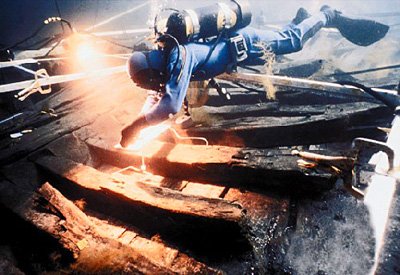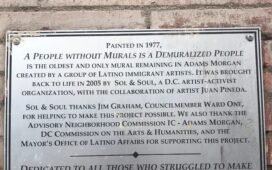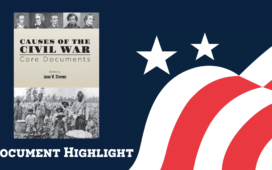After 31 years of exploring Maryland’s shipwrecks, coastal landscapes, and submerged stories, today Dr. Susan Langley will conclude an illustrious career as Maryland’s State Underwater Archaeologist. Before joining state service, Susan had already built an impressive career in the field, working on international excavations and groundbreaking projects that helped define her as a leader in maritime archaeology. Since then, she has guided some of Maryland’s most ambitious underwater surveys, shaped national preservation policy, and sparked public fascination with what lies beneath the surface.
In this interview, Susan reflects on the early inspirations that led her to the field, the challenges and triumphs of a life spent underwater, and the legacy she hopes to leave behind for Maryland and the next generation of archaeologists diving into the unknown.
Can you tell us what first sparked your interest in archaeology, and what drew you specifically to underwater archaeology?

My parents were into history, and we visited an uncle in New Mexico whose house was on a site that the University of New Mexico was excavating, and he took me to other sites. Add to this my ancestors were boat-builders and fishermen in Nova Scotia, and I grew up on the Great Lakes.
I think it all came together when my father would bring home old National Geographics from his office when they were discarded, and one image has stuck with me from the late 1950s from an underwater project on the Yucatan. It was just the hands of a diver holding a ceramic pot as he ascended and silt was swirling out of the pot.
Not a practice we would embrace today, but in retrospect I think that’s when I was hooked.
Do you remember your very first dive as an archaeologist? What was it like?
I remember my first dives as the visibility wasn’t great, the current was strong, and I didn’t own contact lenses then so I was flying blind and didn’t want to admit how little I could see.
My first archaeological dives were daunting as they were in Red Bay, Labrador and I still didn’t have contacts, had to wear a dry suit (for which I had not been trained) and was in terror of “messing up” on this Parks Canada project. After the first season, I could afford contacts, and they kept me for additional years, so I presume I was “adequate” — to quote Rodney Little.
You might wonder what the difference between a wetsuit and a dry suit is. A dry suit keeps the diver completely dry, using waterproof materials and seals, with insulating layers worn underneath to stay warm in cold or freezing water. Dry suits are essential for harsh environments but require additional training to use safely.
In contrast, a wet suit allows a thin layer of water to enter between the suit and the diver’s skin, which the body then warms to provide insulation.
Was there a particular discovery that made you stop and think, “This is why I do this!”?
Most of them. I’m happiest when I’m on a site, versus all the necessary but less exciting aspects involving paperwork. Finding personal items that humanize a site are wonderful: a piece of jewelry, a shoe, artifacts on which someone has carved their initials, or the lines of their vessel.
Was there a site that surprised you or challenged your expectations?
I don’t think so; perhaps when we excavated some timbers on Assateague National Seashore and it turned out to be the entire starboard side of a two-masted 19th-century schooner.
Do you have a favorite artifact or story that you love to share at parties?
Not so sure about parties, but a few stand out: an obsidian spear point in a tree throw in northern British Columbia, tracking characters on ceramics from a shipwreck in Thailand to a kiln site farther north of the site, a small silver filigree shoe at a remote trading post in Saskatchewan, a leather shoe with the laces still in it, and a wooden heel from a 1565 Basque whaling ship off Labrador… I’m sure there are many more.
A tree throw is a pit or depression left in the ground when a tree is uprooted.
How did you end up in Thailand?
It was truly a call out of the blue. Someone read something I had written and recommended me; I never really found out who. I was sent for about three years by CIDA (the Canadian International Development Agency, similar to USAID).
Image: Mom Chao (His Serene Highness Prince) Subhadradis Diskul & Susan in Thailand
How has the field changed over the course of your career, especially in terms of technology or public understanding?
The field has changed enormously. Remote sensing equipment was just developing when I was finishing grad school, and now it’s a matter of course. Plus new technologies are being developed all the time. The internet didn’t exist and all the cable channels like The Learning Channel, The History Channel etc., were in their infancy, and these factors alone brought a tremendous level of interest and awareness to the public. It’s generally been for the good of the discipline, but vigilance was necessary, and organizations like the Advisory Council on Underwater Archaeology were consistently having to write letters to channels, organizations and assorted media about ethical concerns and their confusing treasure-hunting and archaeology.
What are you most proud of from your time working in Maryland? Is there a site or program you’re leaving behind that you hope will be your legacy?
I’m proud of most of what we’ve done, but I suppose the larger partnership projects like seeing the U-1105 become an historic shipwreck preserve, the establishment of the Mallows Bay Sanctuary, and the extensive survey work we carried out along the coast. I don’t know that I have a legacy, unless it’s these sites; it seems a bit arrogant to think I’ve made an impact on that level.
What do you hope Maryland’s next generation of archaeologists will carry forward from your work?
While that’s not my call, I would recommend continual public outreach. I am still receiving requests to speak, after 31 years, that begin with, “I didn’t even know we had a State Underwater Archaeologist.” Keep up the STAMP program. I’d also like to see a survey of fish weirs on the upper Potomac.
What’s something people might be surprised to learn about life as an underwater archaeologist?
Probably that we don’t dive as much as they think we do, or that we’d like to be doing! Instead, we are doing research, maintenance, administrative work like applying for grants, budgets, writing monthly and multiple types of annual reports, preparing presentations and publications, and things like this.
What will you miss the most about the work? And what are you looking forward to most in retirement?
I’ll miss working with the amazing people I’ve had the privilege to meet and some of the opportunities I’ve been given to visit sites, participate in events or projects, that would not otherwise have come my way. I’m looking forward to writing a book or two I’ve continually postponed and to travel much more.
What are some of the book ideas you’ve had floating around in your head? We’d love to hear more about what we have coming our way!
I want to write up part of my doctoral work on the WWII vessel Project Habbakuk (building aircraft carriers of ice); I relocated the prototype. Not sure about others specifically, but I’m sure I can do something with fiber/textiles, and other vessels.
A 1946 artist’s impression of the proposed HMS Habbakuk. Illustrated London News Ltd/Mar
Project Habbakuk was a top-secret British World War II initiative to build an unsinkable aircraft carrier out of pykrete, a mixture of ice and wood pulp. Though innovative, the project was ultimately abandoned due to engineering challenges, high costs, and the development of longer-range aircraft.
If you could go back and give your younger self one piece of career advice, what would it be?
I’d probably tell myself the same as I did at the time, but with the assurance that it was true: everything happens for a reason, even the “bad stuff” positions you for something else down the road, and, at the end of the day, rely only on yourself.
If your career were a movie, what would the title be — and who would play you?
I don’t know about a title, but it would have to be an adventure-comedy, and I’d like Meryl Streep or Sigourney Weaver to play me.
What advice would you give to young archaeologists, especially those interested in maritime or submerged cultural heritage?
The discipline goes through cycles of specialize/generalize. It really has to be a bit of both. Figure out what you want to study and where you want to work and aim toward those goals, but seize opportunities to learn new technologies and basic skills. For example, you need to write well to obtain permits and grants and write reports, you need to be able to devise and run a budget, and you may need to repair and maintain your equipment, pumps, etc. Be able to diversify such as learning GIS. If you are valuable to a company for more than one skill, you may avoid layoffs in tough times. As a diver, try to work up to the Divemaster level, but at least obtain the rescue diver/first aid/CPR/AED levels, as this will make you a better diver and also useful to any entity for which you work. Network! Attend conferences and meetings and, if you can afford it, volunteer. Who you know can often be as important as what you know.
As Dr. Susan Langley signs off from her role as Maryland’s State Underwater Archaeologist, we celebrate not just a remarkable career, but a legacy of curiosity, dedication, and stewardship. Her work has helped uncover stories long buried and has inspired countless others to look deeper into the past. We wish Susan all the best in her next chapter and offer our deepest thanks for the passion and perspective she’s brought to the field. Congratulations on a well-earned retirement! We wish you fair winds and following seas.
Discover more from Our History, Our Heritage
Subscribe to get the latest posts sent to your email.





















